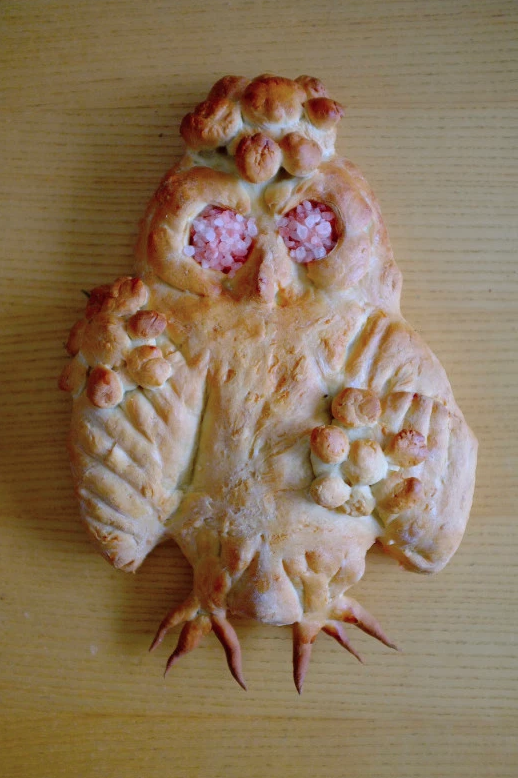
“Lammas, or “Loaf Mass,” is the Feast of the First Harvest, the Feast of Bread. This Holy Day honors the women who created agriculture and bred the crops we cultivate, especially the grains, or corn. In the British Isles, celebrants make corn dollies from the last of the newly-harvested wheat. The corn dolly holds the energy of the grain Goddess and, when placed above the door or the mantle, will bring good luck to the household all year.
When we think of corn, we think of succulent cobs of crisp, sweet, buttery yellow or white kernels: immature Zea mays, Indian corn. You know, corn. As in sweet corn, popcorn, blue corn, decorative corn, corn bread and corn chowder. Corn!
But, did you ever wonder why it’s corn? “Korn” is an old Greek word for “grain.” Wheat and oats, barley and even rice, are korn. This usage is preserved in the song “John Barleycorn must die.” When Europeans crossed the Atlantic and were introduced to the beautiful grain the Native Americans grew, they, of course, called it “corn.” And nowadays we think of corn as only that, but corn is Kore (pronounced “core-a”), the Great Mother of us all.
Her name, in its many forms — Ker, Car, Q’re, Kher, Kirn, Kern, Ceres, Core, Kore, Kaur, Kauri, Kali — is the oldest of all Goddess names. From it we derive the English words corn, kernel, carnal, core, and cardiac. “Kern” is Ancient Greek for “sacred womb-vase in which grain is reborn.”
The Goddess of Grain is the mother of civilization, of cultivation, of endless fertility and fecundity. To the Romans she was Ceres, whose name becomes “cereal.” To the Greeks, she was Kore, the daughter, and Demeter (de/dea/goddess/meter/mater/mother) as well. To the peoples of the Americas, she is Corn Mother, she-who-gave-herself-that-the-People-may-live. She is one of the three sister crops: corn, beans and squash. In the British Isles she was celebrated almost to the present day as “Cerealia, the source of all food.”
Honoring grain as the staff of our life dates at least as far back as Ancient Greece. Nearly four thousand years ago, the Eleusinian mysteries, which were regarded as ancient mysteries even then, centered on the sacred corn and the story of Demeter and her daughter Kore or Persephone. Initiates, after many days of ceremony, were at last shown the great mystery: an ear of Korn. Korn dies and is reborn, traditionally after being buried for three days. Corn and grain are magic. The one becomes many. That which dies is reborn.
Many Native American stories repeat this theme of death and rebirth, but with a special twist. In some origin of corn stories a woman is brutally murdered, in others she demands to be killed. No matter. Once she is dead, she is cut into pieces and planted. From her dismembered body, corn grows. Again and again, everywhere around the world, the story of grain is the story of humanity. The sacred symbolism of grain speaks loudly to the human psyche. To the Ancients, the light in our lights is the Kore, the core, the soul, the seed, of each being.
… The green blessings of the grains are special blessings indeed.”
~Susun Weed
🌾
#Harvest
#Lammas
#Lughnasadh
#CyclesandSeasons
🌾
Leave a Reply